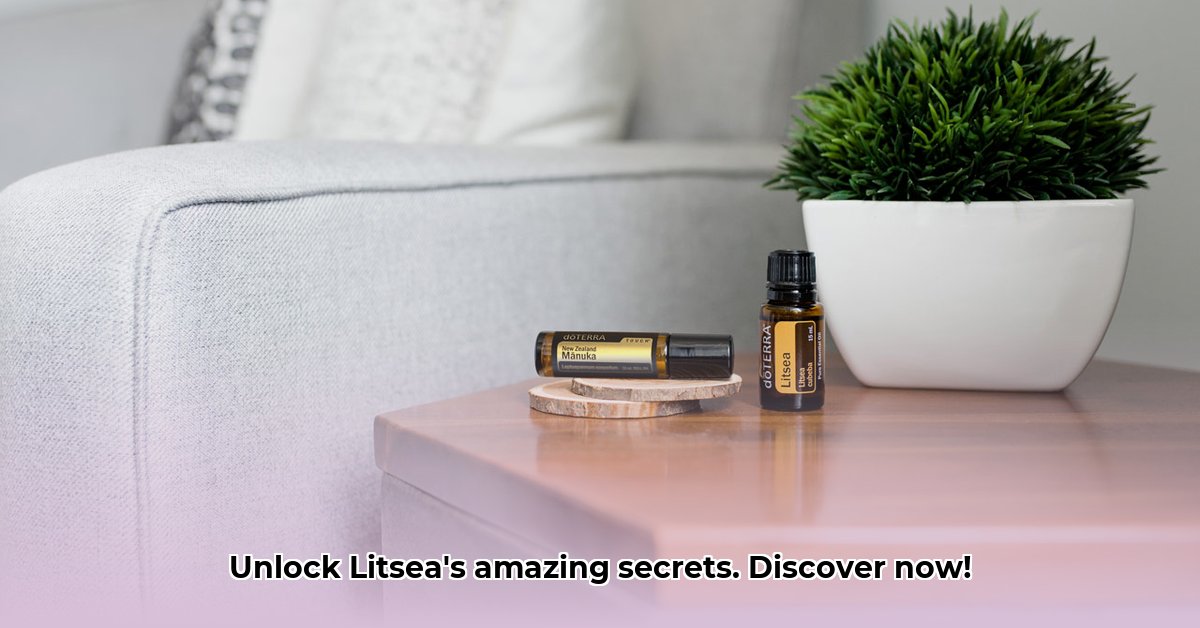
Litsea essential oil, derived from the Litsea cubeba plant, boasts a refreshing citrusy scent and has garnered attention for its potential health benefits. However, while anecdotal evidence and preliminary research suggest possibilities, rigorous scientific backing remains limited. This guide provides a balanced perspective, exploring potential uses while emphasizing the importance of safe and responsible application.
Understanding Litsea Cubeba Essential Oil: Potential and Limitations
Litsea cubeba, also known as May Chang, is prized for its aromatic properties and potential therapeutic uses. Traditional medicine utilizes it for various purposes, fueling interest in its modern applications. However, it's crucial to remember that many claims lack rigorous scientific validation. While some studies hint at antimicrobial, anti-inflammatory, and mood-boosting properties, more research—specifically large-scale clinical trials—is needed to confirm these benefits conclusively. Isn't it important to base our choices on solid evidence rather than speculation?
Potential Benefits: A Cautious Overview
Preliminary research suggests several potential benefits of litsea cubeba essential oil. Some studies indicate potential antimicrobial and antifungal activity against certain strains of bacteria and fungi. This suggests a possible role in topical applications for skin conditions, but further investigation is necessary to establish efficacy and safety. Similarly, some studies show potential anti-inflammatory effects, although more robust clinical trials are needed before any definitive conclusions can be drawn. The invigorating aroma also contributes to its popularity in aromatherapy, where it's often used to promote relaxation and improve mood. However, the mechanisms behind these potential mood benefits require further study.
Limitations of Current Research: The Need for Further Investigation
Despite the promising preliminary findings, it's crucial to acknowledge the significant limitations of the current research. The majority of existing studies are small-scale or in vitro (test-tube) investigations. These findings, while suggestive, don't necessarily translate to the same effects in human bodies in real-world settings. Large-scale, randomized controlled trials are needed to confirm the efficacy and safety of litsea cubeba oil for any specific therapeutic use. Many claims circulating online lack sufficient scientific evidence, emphasizing the need for a cautious, evidence-based approach. Are we comfortable relying on anecdotal evidence alone, ignoring the necessity for more thorough investigation?
How to Use Litsea Essential Oil Safely: A Step-by-Step Guide
The safe and effective use of litsea essential oil necessitates careful handling and adherence to established safety protocols. Never ingest litsea essential oil; it's toxic if swallowed. Always dilute it before topical application. This section provides a practical, step-by-step guide to minimize potential risks and maximize safety.
Patch Test: Before applying litsea oil to your skin, always perform a patch test. Apply a tiny amount to a small, inconspicuous area (e.g., inner arm) and wait 24-48 hours. If no irritation or allergic reaction occurs, it's likely safe for broader use, but dilution remains crucial.
Dilute with a Carrier Oil: Never apply undiluted litsea essential oil to your skin. Always dilute it with a carrier oil, such as jojoba, fractionated coconut, or sweet almond oil. A typical dilution ratio is 1-3% essential oil to carrier oil (e.g., 1-3 drops per 10ml of carrier oil). Adjust the dilution based on individual sensitivity.
Aromatic Diffusion: For aromatherapy, use a diffuser designed for essential oils. Ensure adequate ventilation to avoid potential respiratory irritation. Individuals with asthma or other respiratory conditions should proceed with caution.
Avoid Contact with Eyes and Mucous Membranes: Keep the oil away from your eyes, nose, and mouth to prevent irritation. If accidental contact occurs, immediately rinse with plenty of water.
Pregnancy and Breastfeeding: Pregnant or breastfeeding individuals, and those with pre-existing health conditions, should consult a healthcare professional before using litsea essential oil.
Potential Risks and Mitigation Strategies
While generally considered safe when used appropriately, litsea essential oil carries potential risks. Understanding these risks and implementing appropriate mitigation strategies is paramount:
| Application Method | Potential Risk | Likelihood | Severity | Mitigation Strategies |
|---|---|---|---|---|
| Topical Application | Allergic reaction, skin irritation | Low to Moderate | Mild to Moderate | Patch test, proper dilution, avoid if sensitive skin |
| Aromatic Diffusion | Respiratory irritation | Low | Mild | Good ventilation, discontinue if irritation occurs |
| Internal Ingestion | Severe toxicity | Very Low | High | Strictly Avoid |
| Sun Exposure (after topical use) | Phototoxicity (increased sun sensitivity) | Low | Moderate | Avoid direct sun exposure for several hours after application |
The Future of Litsea Research and Responsible Use
The current understanding of litsea essential oil's benefits and risks is incomplete. Significant research gaps exist, highlighting the need for more robust studies focusing on:
- Efficacy and safety: Large-scale clinical trials are needed to confirm therapeutic claims and establish clear safety guidelines.
- Mechanisms of action: Further investigation is required to elucidate the mechanisms behind its potential pharmacological effects.
- Standardized extraction and concentration: Establishing standardized protocols for oil extraction and concentration will ensure consistency and reliability in research.
Responsible use of litsea essential oil involves a cautious approach, informed by the current scientific evidence and an awareness of potential risks. The promising preliminary findings warrant further investigation, but conclusive evidence is currently lacking. Until comprehensive scientific evidence is available, prioritize safety and consult a healthcare professional for guidance before incorporating litsea essential oil into your wellness routine.